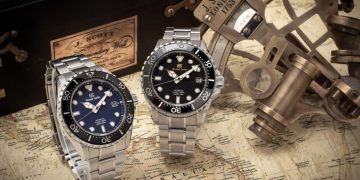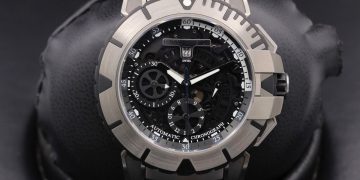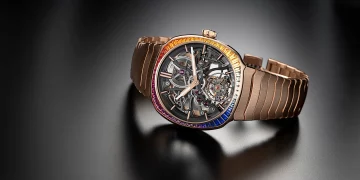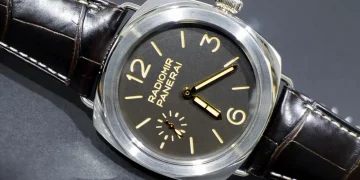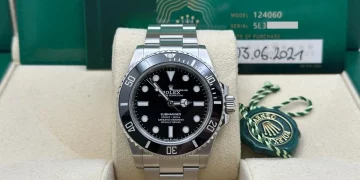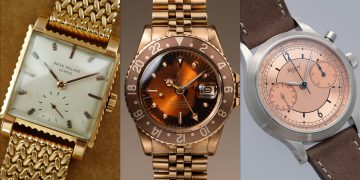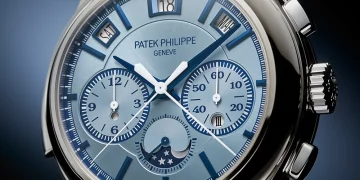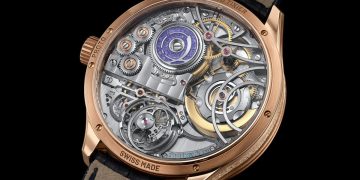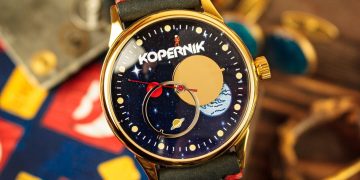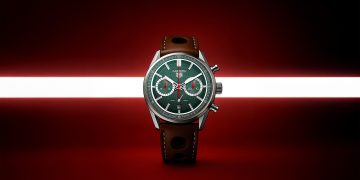In the world of luxury goods, few industries carry as much cultural weight as the watchmaking industry. A top-tier watch brand is more than just a producer of finely crafted timepieces; it is a symbol of tradition, expertise, and exclusivity. The cultural heritage of these watch brands plays a crucial role in shaping their identity and, ultimately, their market position. Brands like Rolex, Patek Philippe, and Audemars Piguet do not merely compete on the basis of technical specifications or modern features but are deeply rooted in history, craftsmanship, and legacy. This article explores how the cultural heritage of top-tier watch brands influences their market position, customer loyalty, and overall success.
1. The Role of Heritage in Building Brand Identity
The cultural heritage of top watch brands is not simply a byproduct of their history; it is a core element that defines their brand identity. These brands use their history as a tool to connect with consumers, telling a story that transcends the product itself and reaches the emotional core of buyers. For example, Rolex has built its identity on the idea of being the ultimate symbol of achievement and success. Their legacy of producing watches that have been worn by explorers, athletes, and royalty elevates the brand beyond its physical product.
a. Patek Philippe: The Watch of a Lifetime
Patek Philippe is one of the most revered luxury watchmakers in the world, and its cultural heritage is integral to its success. Known for producing highly complex and exquisitely crafted timepieces, Patek Philippe’s long history dates back to its founding in 1839. Their legacy is deeply embedded in the brand’s tagline: “You never actually own a Patek Philippe. You merely look after it for the next generation.” This statement encapsulates the brand’s philosophy of creating timeless masterpieces that transcend generations. The cultural weight of this message appeals to buyers who are not only purchasing a watch but are investing in a legacy.
For consumers, the story of Patek Philippe’s heritage—such as the brand’s innovations in complications like the perpetual calendar or minute repeater—creates a sense of pride in owning something that connects them to the brand’s centuries-old tradition of excellence. This heritage influences the brand’s market position by positioning it as not just a watchmaker but a custodian of horological history.
b. Rolex: A Symbol of Prestige and Achievement
Rolex, founded in 1905, is arguably the most recognizable luxury watch brand in the world. Its cultural heritage plays a massive role in maintaining its status as a global symbol of prestige. The brand’s history of being associated with exploration, from the first successful ascent of Mount Everest to underwater expeditions in the Marianas Trench, bolsters its image as a tool for high achievers. Rolex is not just a watch; it is a symbol of success and accomplishment, and its cultural heritage reinforces this idea.
The Rolex brand narrative is built on a long-standing association with the worlds of sports, adventure, and exclusivity, all of which contribute to its premium market positioning. The cultural value of owning a Rolex is not limited to the watch’s technical capabilities but extends to the prestige and legacy of wearing a piece of history that has been worn by some of the most influential people in the world.
2. The Impact of Craftsmanship and Innovation on Market Position
The craftsmanship and technical innovation that top watch brands have developed over centuries contribute significantly to their market positioning. Heritage brands do not simply rely on their legacy for success but continue to innovate while preserving their traditional methods of watchmaking. This combination of artisanal craftsmanship and modern technology allows these brands to maintain their position as the pinnacle of luxury in the watchmaking industry.
a. Audemars Piguet: Innovation with Tradition
Audemars Piguet, founded in 1875, is another example of a luxury brand where cultural heritage and innovation come together. Known for creating the Royal Oak in 1972, a bold design that revolutionized the luxury watch industry, Audemars Piguet’s cultural heritage has been shaped by its ability to blend traditional watchmaking skills with forward-thinking design. The Royal Oak was a groundbreaking piece that established Audemars Piguet as a brand that pushes the boundaries of watchmaking while maintaining deep respect for the craftsmanship of its predecessors.
This willingness to innovate without sacrificing heritage allows Audemars Piguet to appeal to consumers who value both timelessness and modernity. The brand’s continued success in the market is partly due to its ability to stay relevant while preserving its long tradition of producing some of the world’s most complex and beautifully designed timepieces.
b. Vacheron Constantin: A Legacy of Complex Movements
Vacheron Constantin, founded in 1755, is one of the oldest watchmaking houses in the world. The brand’s cultural heritage is built on producing some of the most complicated movements in horology, including the tourbillon, minute repeater, and perpetual calendar. These technical innovations have cemented Vacheron Constantin’s reputation as a leader in high-end mechanical watches. The brand’s deep-rooted expertise in craftsmanship allows it to produce limited edition watches that are not only functional but also artistic masterpieces.
For Vacheron Constantin, its market position is anchored in its ability to produce timeless, exquisite timepieces while continuing to refine the skills and techniques passed down through centuries. Buyers who invest in Vacheron Constantin watches are not just purchasing a timekeeping device; they are buying into a tradition of mastery that spans over two centuries.
3. Brand Loyalty and Emotional Connection to Heritage
The cultural heritage of top-tier watch brands fosters a strong emotional connection with consumers. People are not just buying a product; they are buying into a legacy and a set of values that resonate with their own identity. The emotional pull of a brand’s heritage and storytelling plays a significant role in the purchasing decisions of luxury consumers.
a. The Power of Tradition and Legacy
In the luxury watch market, consumers are often drawn to the story behind the brand. A well-established brand with a long history offers more than just a watch; it offers an opportunity for customers to align themselves with a rich cultural narrative. For example, Patek Philippe is more than a luxury brand; it is a piece of history, passed down from one generation to the next. This sense of continuity and heritage makes Patek Philippe one of the most coveted brands among watch enthusiasts, as consumers view their purchase as an investment in both the present and the future.
In this sense, top-tier watch brands benefit from brand loyalty that is not easily replicated by newcomers or competitors. The heritage and the cultural legacy embedded within these brands create a strong emotional bond with consumers who value the connection to the past and the future.
b. Social Proof and Cultural Status
Another key element of how heritage impacts market position is the concept of social proof. Consumers often purchase luxury items because they signal cultural status and social identity. Owning a Rolex or a Patek Philippe is not just about wearing a watch; it is about conveying a sense of success and elegance. The cultural weight of these brands, bolstered by their heritage, adds an extra layer of desirability that makes them highly sought after.
For modern consumers, particularly those in emerging markets, purchasing a top-tier brand watch is often seen as a rite of passage into the upper echelons of society. The cultural cachet that comes with owning a watch from a prestigious brand is a driving force behind its market position.

4. The Impact on Market Strategy
The cultural heritage of top-tier watch brands also shapes their market strategies. These brands have cultivated exclusive and limited-edition releases, which further enhance their perception as rare and coveted items. Through selective distribution, strategic pricing, and personalized customer service, luxury watchmakers continue to reinforce their elite status in the market.
Top brands also utilize their heritage to create limited-edition collections and heritage-inspired designs, which tap into the emotional connection consumers have with the brand’s history. These strategies allow brands to maintain high demand for their products, despite their often high price points, and ensure that their watches remain symbols of prestige and exclusivity.
5. Conclusion
The cultural heritage of top-tier watch brands is a critical element in shaping their market position. The legacy of craftsmanship, innovation, and exclusivity associated with brands like Rolex, Patek Philippe, Audemars Piguet, and Vacheron Constantin allows them to transcend the functional aspects of timekeeping. These brands are more than watchmakers; they are custodians of horological history and symbols of success. Their cultural heritage creates a deep emotional connection with consumers, fostering brand loyalty and positioning these brands as leaders in the luxury market.
In an era where modern technology and mass production have become more prevalent, the cultural legacy of these top watch brands remains one of their most powerful competitive advantages. Through their continued focus on innovation, tradition, and storytelling, these brands maintain a market position that is not only about selling a timepiece but about offering a piece of history, prestige, and legacy.


